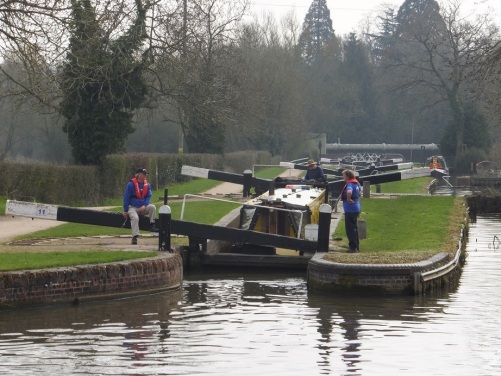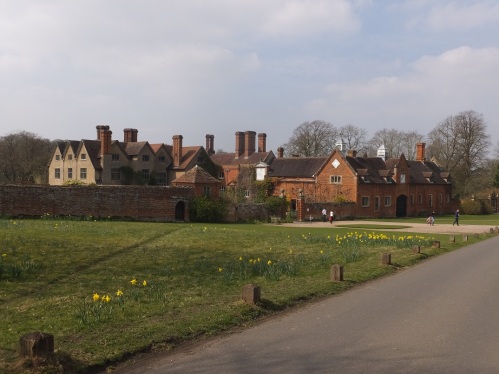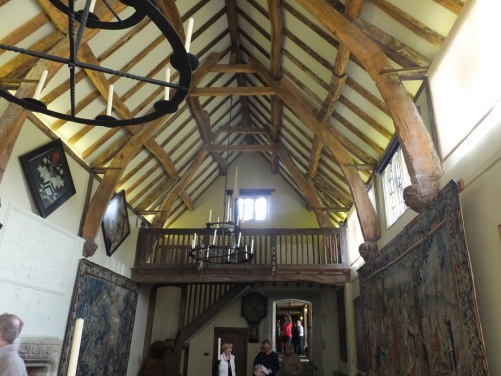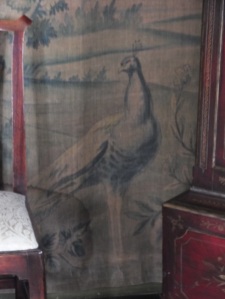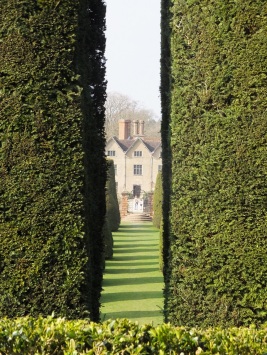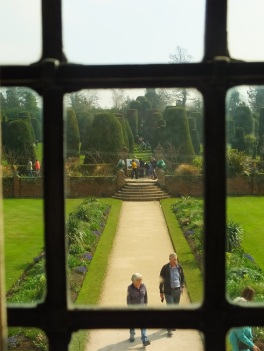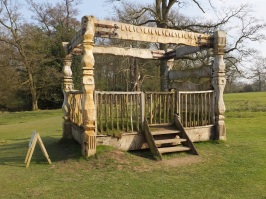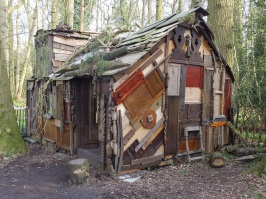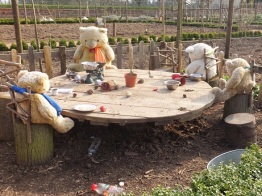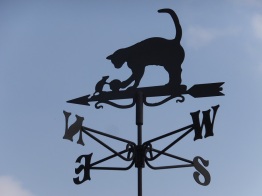A day of locking in the sun. One boat passed us going towards Stratford this morning shortly before we set off that meant the locks would be in our favour. We met another boat coming out of the next lock. This was Lock 21, we have never done it before, we’ve done the rest on the Lapworth flight and all the ones behind, but never this one. When bring Winding Down down south we’d come down Lapworth and veered to the left down lock 20. On a hire boat Christmas 2013 we reached the Lapworth link and turned right and headed up the Grand Union for a bit. So Lock 21 has been missed twice, but not this time.
Above it I could see a volunteer lock keeper heading towards us, she was just popping for a coffee then would catch up with us. A short time later another volunteer appeared, checked that we’d like a hand and carried on up the locks with us. In the end we had both of them with us which made the going very easy. The bottom gates of these locks are double gates which means you end up having to walk around the lock a lot, so an extra pair of hands was great. Towards the top we had to slow down and pull over as a single hander was coming down the flight, they could just squeeze past us in the pound we were in. The volunteers left us and headed off to help the single hander, we only had another two locks to do today before we pulled in.
As we’d made it up the flight by 12.30 we had a bite to eat and then headed to Packwood House about a mile away.
Packwood House is a timber framed Tudor Manor House, that isn’t quite what it seems. It started life as a farmhouse built around 1556 for John Fetherston. It passed through the generations with the last Fetherston dying in 1876. In 1904 it was bought by galvanised steel industrialist Alfred Ash who passed it onto Graham Baron Ash (his son) in 1925. Graham spent the next two decades creating a more correct Tudor Manor House.
In 1927 he converted a barn into the Great Hall, adding sprung oak flooring for dancing, a minstrels gallery and large bay window. Queen Mary visited the house for afternoon tea in1927 and had to walk outside to get to and from the Great Hall. Shortly afterwards a Long Gallery was built to connect the two. Graham Ash bought an extensive collection of 16th and 17th Century furniture and rescued panelling and fireplaces from houses that were being demolished to furnish his ideal country house. He remodelled rooms, adding ensuite bathrooms to the bedrooms.
In 1941 he donated the house to The National Trust with the understanding that there would always be fresh flowers in the house (replaced every Tuesday) and that the furniture would remain how he had positioned it, how he thought it should be viewed.The origins of many of the items in the house are not known as he fell out with the Trust in his later life and destroyed all his documents before his death.
The house has numerous tapestries, one room is lined with painted canvas ( which looks like tapestries). This was especially interesting to me as when at college I designed a whole set around the tapestries at Blenheim Palace and had to realise two sections painted on canvas.
Outside is the famous Yew Garden, this was laid out in the 17th Century and is quite amazing. The trees must take so much pruning to keep their shape, sadly some are suffering from too much water to their roots and some are getting too old, these are being replaced. A tight spiral path bordered with box hedge leads to under a Yew tree at the end which gives a fantastic view back to the house.
Graham Ash liked his follies. The Trust have commissioned artist Hilary Jack to create a series of contemporary follies. There are small buildings for insects to inhabit in the Yew garden then two much larger follies. Embedded is a giant bed that has been hand carved from a felled oak with turf pillows and bedding. It was inspired by a quote in the 1930’s visitor’s book “a house to dream of, a garden to dream in”. My favourite is called InsideOutHouse and is a Hansel and Gretel type house in the woods made from a timber frame and then clad with reproduction Tudor furniture. I suspect this will be even better when all the bluebells are in full bloom.
We finished sat in the sun over looking a field of newborn lambs eating an ice cream before heading back to Lillian.
16 locks, 1.07 miles, 2 volunteer lock keepers, 1 fake tudor manor house, 26 tapestries, 1 painted tapestry, 100 yew trees, 1 cottage, 1 big bed, 4 teddy bears picnicking, 2 ice creams, 6 sausages in the oven.

